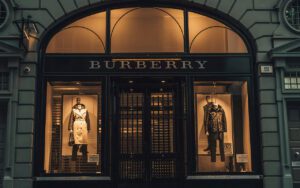Burberry to Cut 1,700 Jobs Amid Declining Sales and £66m Loss
Burberry is preparing to shed up to 1,700 jobs – equivalent to nearly 18% of its global workforce – as it seeks to slash costs and recover from a downturn that has led to a £66 million pre-tax loss. The reductions mark one of the most significant restructuring efforts in the company’s recent history and reflect the mounting pressure on luxury retailers in a contracting global market.
The cost-cutting plan, unveiled this week, is being spearheaded by new chief executive Joshua Schulman, who joined the business in July 2024. The former Coach and Jimmy Choo executive has laid out a strategy that aims to save £60 million in new efficiencies, contributing to a total target of £100 million in annualised savings by 2027.
The bulk of job losses are expected to be concentrated in head office roles, particularly at the firm’s London headquarters. Additional cuts will be made at its manufacturing site in Castleford, West Yorkshire, where Burberry plans to eliminate the night shift and reorganise staff schedules. Castleford has historically played a key role in producing Burberry’s signature trench coats, a cornerstone of the brand’s heritage.
The announcement comes as Burberry grapples with a steep decline in sales, notably in China, one of its most critical markets. The company reported a 12% drop in like-for-like sales for the financial year ending 29 March 2025, with total revenue falling to £2.5 billion. This compares starkly with a £383 million pre-tax profit in the previous year.
Sales in mainland China alone fell by 15% over the year, with an 8% drop recorded in the fourth quarter. The global Chinese customer group — which represents a significant share of luxury spending worldwide — also declined by a mid-single-digit percentage. These figures are in line with broader challenges faced by luxury brands in the Chinese market, where consumer confidence has wavered amid a slower-than-expected post-pandemic recovery and demographic shifts. Recent earnings reports from luxury conglomerates such as LVMH (Louis Vuitton Moët Hennessy) have highlighted similar concerns, with LVMH citing sluggish demand for high-end goods in Asia. [Source: The Guardian]
Burberry has also been caught in the crosscurrents of rising geopolitical tensions. Though the UK brand is less directly exposed to US-China trade policies, global uncertainty has weighed on consumer sentiment. Earlier this week, the US and China announced a 90-day pause in escalating tariffs, offering some temporary relief to markets, but long-term risks remain. [Source: BBC News]
Despite the bleak financials, Schulman struck an optimistic tone. “I’m more optimistic than ever that Burberry’s best days are ahead,” he said in a statement, while acknowledging that “the macroeconomic and geopolitical environment remains volatile.” His strategy, dubbed “Burberry Forward,” aims to refocus the business around its most recognisable icons such as its trench coats and heritage scarves — which typically sell for between £420 and £2,500 — while also expanding the brand’s appeal through a broader, more inclusive pricing model.
The fashion house, which is listed on the FTSE 250, saw its shares climb 8.1% to 894p in London trading following the announcement, suggesting investors are encouraged by the bold restructuring. The share price rebound may be partly attributed to earlier fears of an even steeper decline in performance, with some analysts describing the results as “not as bad as expected”.
Nonetheless, the challenges facing Burberry are far from over. The global luxury sector is undergoing a fundamental recalibration, as high-net-worth consumers in key markets become more selective and price-sensitive. Additionally, greater competition from younger, digitally native brands and expanding second-hand luxury platforms — such as Vestiaire Collective and The RealReal — are reshaping the competitive landscape.
Schulman’s turnaround strategy marks a decisive shift as Burberry looks to bolster profitability, protect its British craftsmanship credentials, and reconnect with both its traditional clientele and a new generation of consumers. However, with a significant workforce reduction on the horizon, maintaining staff morale and brand integrity will be key in determining whether the company can emerge stronger on the other side.
Further Reading:
Burberry to cut 1,700 jobs in global savings drive amid luxury slowdown – Business Matters
Luxury goods: China demand slowdown bruises LVMH and Richemont – Financial Times
US-China announce truce on tariffs – BBC News




